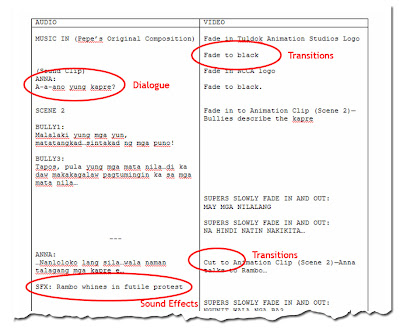I. Preproduction
Animation requires a lot of planning. Although it may seem tedious and time consuming at first, careful planning and setting up of a story will save you a lot of time in the long run. This is the most important process, and usually takes the longest.
Before you want to start doing the visuals, you might want to pick your brain and write your story down so you can "free up more space" for the visuals in your mind that will happen later on (it works for me!). Remember, this is also important too!
Writing a story down will test you to see if you can put a story together on paper! If you can say it through words and the audience will understand it, then you have a bigger chance of making your story be understood in it's final form. This is just the beginning!
Subject.
Think of a concept or a subject. It can be about anything, from a social issue to a moral lesson, to a frustration or simply something that just needs to be said.
Story.
From the subject/concept, wrapping a story around it will be helpful, and entertaining as well. Animated filmmaking is storytelling after all. This is the most important aspect of a film, without it you will have an empty shell no matter how technically superior or eye-catching your animation may be, it will be easily forgotten if it has an awful, cliché, or simply bad story.
A. Sequence Outline
Once you’ve got your story done, you can flesh it out by making a sequence outline. It’s just a chronological list of all the important, general events that happen in the story.
The script is a more detailed version of your sequence outline. Here all the details are placed, even minor actions, dialogue, sound effects cues, and scene transitions to bring your characters and film (almost!) to life.
For animation it is useful to have your script divided into two columns: one for audio (what you hear) and one for video (what you see).
There are quite a lot of sites and books that deal with this in much more detail, google them!
My friend keeps complaining that the columns need to be switched into Video and Audio, personally I do mine like the one above coz I got used to the AV acronym, meaning Audio (first!) then video! but eh... it's up to you. :)
next: Character and background designs!
















































No comments:
Post a Comment